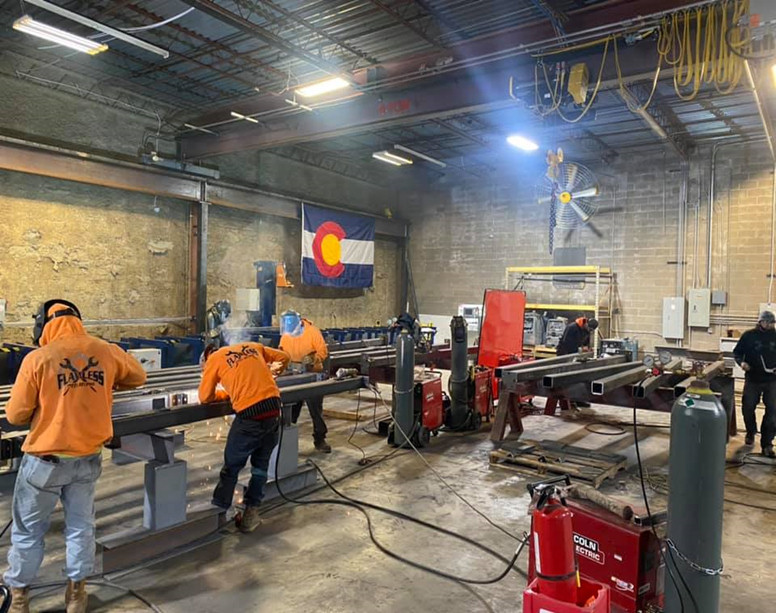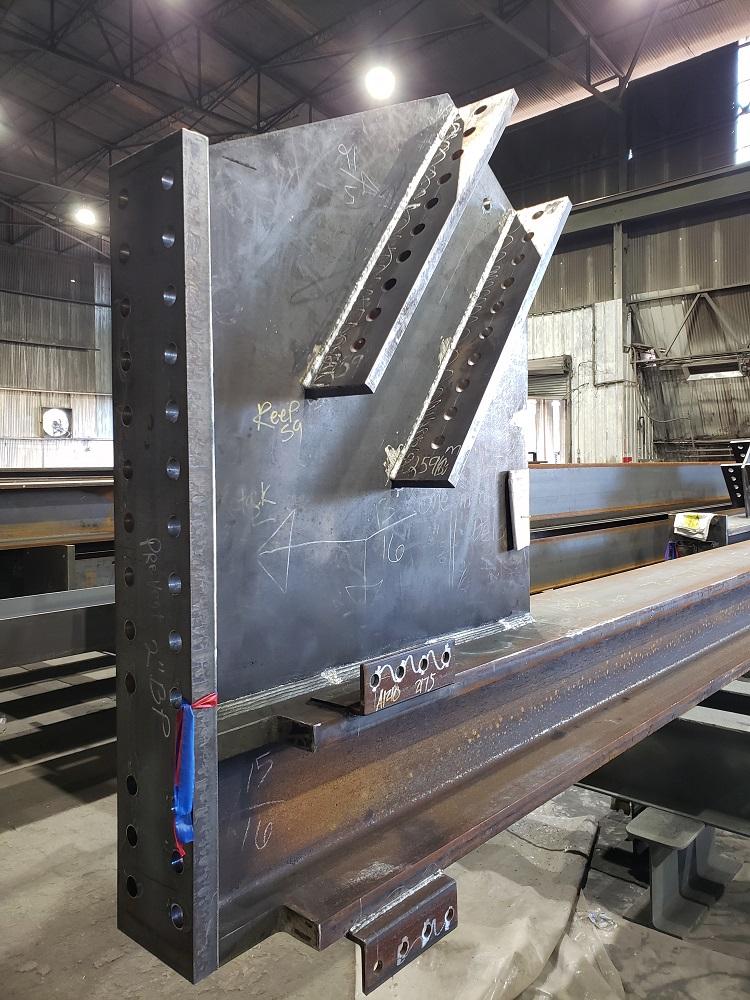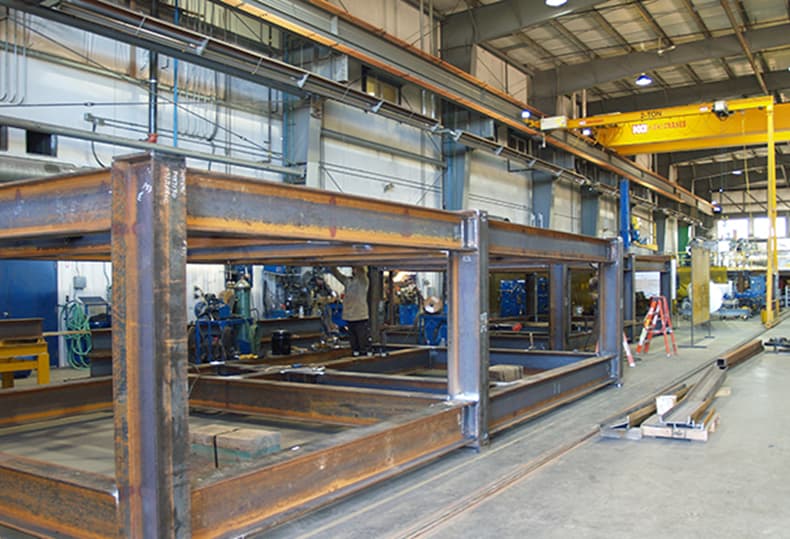Cutting-edge Fads in Steel Construction: Enhancing Durability and Precision
In the world of steel manufacture, the pursuit of resilience and accuracy has actually led to a wave of cutting-edge trends that are reshaping the market. These patterns are not simply forming the existing yet also laying the groundwork for the future of steel fabrication, guaranteeing additional improvements in longevity and accuracy.
Advanced Welding Technologies
In the world of steel fabrication, the fostering of sophisticated welding modern technologies has significantly transformed the market's method to accomplishing remarkable top quality and accuracy in architectural welds. Advanced welding innovations, such as laser beam of light welding and friction stir welding, have become game-changers in the field. Laser light beam welding uses a concentrated laser light beam to sign up with metal components with remarkable accuracy and rate, making it excellent for intricate layouts and slim products. On the various other hand, friction stir welding develops incredibly solid bonds by mechanically intermixing the particles of the materials at the joint, eliminating the demand for thawing the metal. These technologies offer countless advantages, including reduced heat-affected areas, very little distortion, and enhanced mechanical buildings in the welded joints. By leveraging these advanced welding strategies, steel producers can elevate the resilience, strength, and precision of their structural welds, satisfying the significantly demanding needs of contemporary building projects.
Robot Automation in Fabrication
Accepting robot automation has come to be a foundation of modern-day steel manufacture practices, improving and enhancing procedures efficiency across the market. Robotics are changing the means steel components are manufactured, using unparalleled precision and speed while minimizing human mistake. These automated systems can take care of repetitive tasks with consistent accuracy, resulting in greater top quality final product.
One trick benefit of robot automation in steel manufacture is the capacity to function all the time without exhaustion, significantly increasing production output. This continuous operation minimizes downtime and accelerates project timelines, ultimately conserving prices for manufacturers. Additionally, robots can be set to do detailed tasks that may be tough or unsafe for human employees, enhancing security in the work environment.
Furthermore, robot automation enables seamless assimilation with other digital modern technologies, such as computer-aided design (CAD) software application and Net of Things (IoT) systems (steel fixing). This interconnected approach improves interaction between various stages of manufacture, optimizing process and making certain real-time monitoring and control. As the steel fabrication market proceeds to advance, robotic automation stands apart as a transformative force driving performance and accuracy in making processes

High-Strength Alloy Development
The development of high-strength alloy advancement in steel construction is reshaping the market's technique to improving product toughness and efficiency. High-strength alloys are crafted to show superior mechanical residential properties, such as increased tensile stamina, durability, and rust resistance contrasted to typical steel grades. By incorporating these sophisticated alloys into fabrication processes, manufacturers can generate elements that stand up to higher tension levels and rough settings, bring about even more long lasting and trusted final product.
One secret benefit of high-strength alloy growth is the capacity to lower material density without jeopardizing architectural stability. This not just results in lighter-weight elements however additionally adds to cost financial savings and boosted effectiveness in construction and setting up procedures. The enhanced strength-to-weight proportion of these alloys allows for the official website design and building of frameworks with higher load-bearing abilities while reducing total weight.
3D Modeling and Simulation Software Application
Innovations in steel manufacture procedures have actually been significantly moved by the combination of advanced 3D modeling and simulation software application tools. These devices permit producers to produce thorough online designs of their tasks, allowing them to envision the last item with precision prior to any physical job starts.

Lasting Practices in Steel Manufacturing
Including lasting techniques into steel manufacturing processes is vital for lessening environmental impact and guaranteeing long-term resource availability. One vital lasting practice is the adoption of energy-efficient innovations to minimize greenhouse gas emissions throughout the steel manufacturing procedure. This consists of using renewable resource sources, such as solar or wind power, to power steel plants and carrying out energy-efficient equipment to enhance power use.
Another vital facet of sustainable steel production is the liable sourcing of basic materials. go to these guys This involves guaranteeing that the iron ore and various other sources used in steelmaking are obtained from honest and eco-friendly sources. By advertising openness in the supply chain and sticking to rigorous ecological standards, steel producers can lessen the adverse influences of source removal on local communities and neighborhoods.

Final Thought
To conclude, the innovative fads in steel construction such as advanced welding modern technologies, robot automation, high-strength alloy advancement, 3D modeling and simulation software, and lasting methods are enhancing the durability and precision of steel products. These innovations are revolutionizing the steel fabrication industry by boosting sustainability, performance, and high quality. It is clear that the future of steel manufacture exists in embracing these innovative technologies to fulfill the demands of modern-day construction and production markets.
In the world of steel fabrication, the quest of durability and accuracy has actually led to a wave of ingenious fads that are improving the sector.In the realm of steel construction, the fostering of advanced welding modern technologies has substantially changed the industry's technique to attaining exceptional high quality and accuracy in structural welds. As the steel fabrication market proceeds to evolve, robotic automation stands out as a transformative force driving performance and accuracy in manufacturing processes.
Additionally, recycling and recycling steel scrap and waste materials play a considerable function in boosting the sustainability of steel manufacturing. steel fabrication melbourne.In verdict, the cutting-edge fads in steel fabrication such as advanced welding technologies, robotic automation, high-strength alloy advancement, 3D modeling and simulation software application, and lasting methods are improving the toughness and accuracy of steel items